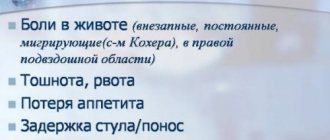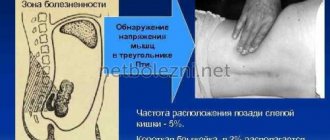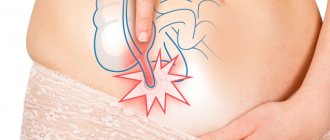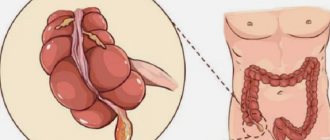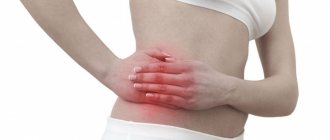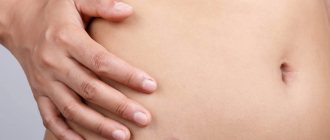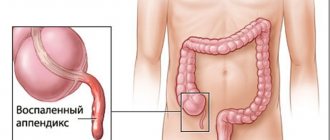Grandparents of those who are now slightly over 30 are a real storehouse of various restrictions, accompanied by deadly predictions, ranging from sitting in the cold and subsequent infertility to predicting meningitis due to the lack of a hat in winter.
We can immediately say that the myth about appendicitis due to eating seeds with husks or cherries with pits is just a fiction that has not found scientific confirmation. Over the years, more than one study has been conducted in medical practice proving that eating “food garbage” does not cause inflammation of the appendix. For example, in a study of Turkish doctors, out of 2000 cases, only eight were described, when the cause of inflammation of the appendage of the cecum was undigested food debris such as husks or fruit seeds.
Yes, it is necessary to tell children that it is harmful to eat sunflower seeds with the skin on, but not by threatening them with appendicitis and scary men with scalpels, but by saying that the seeds can be dirty (most often this is the case), and unwashed sunflower seeds are a good reason to sit at home for the next few days. weekend with nausea and diarrhea.
The opinion of ordinary people
When you eat sunflower seeds, the husks enter your stomach. Therefore, seeds are classified as products that clog the body. The structure of the peel is hard and does not dissolve. The danger from being in the stomach is small and, of course, will not lead to death, but an excessive amount of it can become the root cause of many problems.
Hypotheses and beliefs about the development of appendicitis from eating seeds are based on this.
Authoritative opinion - doctors
Appendicitis is an inflammation of the hollow appendage of the cecum, located in the right lateral region of the abdomen. The location may be different, displaced due to a number of factors: pregnancy, illness, anomalies in the structure of the body.
5 mechanisms of occurrence:
- Vascular. Pathologies of the hematopoietic system: vasculitis, thrombosis of the ileocolic artery can also become the root cause of inflammation of the appendix.
- Infectious. The presence of infections in the body: tuberculosis, amoebiasis, typhoid fever. Diseases of a viral nature also act as catalysts for inflammation.
- Mechanical. When the lumen is blocked, appendicitis becomes inflamed, resulting in the proliferation of pathogenic microflora in the intestine. The culprits are parasitic diseases, such as helminthiasis.
- Endocrine.
- Immunological.
The last two theories are closely intertwined. The appendix is directly related to immunity and endocrine processes. The structural components of lymphoid tissue influence the restoration of defenses in the body. The appendix is an organ of immunogenesis, a lymphoid organ.
Due to overactivity of the immune system, lymph overgrowth occurs. In parallel with this, excessive amounts of serotonin may be released in the cells of the appendix, which gives impetus to the inflammatory process.
Catalysts for appendicitis
The causes of inflammation of the appendix may be:
- Weakening of the body's immune defense;
- Taking medications;
- Pregnancy;
- Diseases of the gastrointestinal tract;
- Untimely removal of protein breakdown products.
The main reason for the development of appendicitis is blockage of the lumen of the underdeveloped end of the intestine. Inflammation of the appendix manifests itself not only due to mechanical blockage, but also due to the accumulation of fecal stones and fibrosis. This affects the trophism of the organ, the pressure increases, and pyogenic bacteria are activated.
Adhesions, caused by chronic diseases of the pelvic organs: cholecystitis, enteritis, and in women adnexitis, compress the lumen of the appendix. The trigger mechanism is pathogenic microorganisms located in the stomach and intestines, as well as the bending of the appendix due to the presence of a foreign body in the appendix.
It's time to remember about excessive consumption of seeds. The seeds themselves are completely absorbed by the body and cannot cause clogging of the intestinal lumen. The husk is excreted from the body unchanged. It is unlikely that sunflower husks will get into the small opening of the appendix.
It can be assumed that the fruit seed will fall into the vermiform appendix and clog it. The conclusion is that inflammation of appendicitis cannot occur from seeds, and the likelihood that it was the husk that caused the blockage is no higher than the occurrence of a blockage from seeds or accidentally swallowed objects. Sunflower husks, foreign bodies and roundworms do not become factors in inflammation of the appendix as often as they are attributed.
Consumption of seeds
You shouldn’t completely give up seeds, but you need to follow the rules of use to prevent negative consequences:
- Peel the sunflower seeds from the husks by hand.
- Sort out the seeds from debris and rinse before frying.
- Chew the seeds thoroughly, this will serve as insurance against their negative effects on the body.
Question to the doctor: how not to miss an attack of appendicitis
It would seem that everyone knows everything about appendicitis (or, at least, they are sure that they know). However, this well-studied disease can be insidious from a diagnostic point of view, and many patients have no idea “exactly how appendicitis hurts.” How to understand that you need to see a doctor urgently? How not to miss an attack?
About this - the head of the department of abdominal surgery of the National Medical Research Center of Surgery named after. A.V. Vishnevsky, Doctor of Medical Sciences, Professor Andrey Germanovich Krieger.
What increases the risk of developing appendicitis?
No one knows. Medicine is an inexact science.
Lifestyle, exercise, nutrition?..
Neither physical activity, nor psychological troubles, nor a person’s dietary preferences have an effect. In men and women, the incidence of the disease is almost the same (another thing is that appendicitis is more often suspected in women, but then gynecological problems are discovered).
That is, the disease has long been described and it has long been clear what to do with it, but the risk factors are still unknown?
Unknown.
Does it make sense to remove the appendix prophylactically?
In no case. Any surgical intervention carries the risk of complications, and appendectomy - removal of the appendix - is far from an indifferent operation. And not as simple as it might seem. After it, adhesions always naturally and inevitably arise, which can lead to intestinal obstruction and the occurrence of adhesions.
In America in the 50-60s there was a wave when newborn children underwent prophylactic appendectomy. Fortunately, they refused. The practice did not pay off.
The vermiform appendix also performs certain immunological functions?
Yes, and it is also called the intestinal tonsil, because lymphoid tissue is located here, which has a certain significance in the general immunological status of a person.
What symptoms are characteristic of acute appendicitis?
Pain in the right iliac region (lower right abdomen) is not intense, constant, aching, dull, not radiating anywhere. It hurts and aches, aches, aches... And it gets worse with movement.
And many people believe that appendicitis is when “it stings in the side and stings”...
When it stings, it’s not appendicitis. If a person feels unbearable pain in the abdomen, it is most often colic (renal, biliary) or perforation of a hollow organ (perforated ulcer). Then the so-called dagger pains arise.
It turns out that the common opinion that appendicitis is an acute pain that a person cannot tolerate is incorrect?
Absolutely false. This pain can be tolerated, which is why quite often people do not consult a doctor in a timely manner.
What does constant pain mean? A day, two, three, a week?
One, two, three.
Or maybe the pain with appendicitis behaves like this: it hurt for an hour or two and went away, the next day again - it hurt for an hour or two and went away?
No, he can not. Once it starts, it aches and aches and gets worse with movement.
That is, call an ambulance?
Certainly.
But not everyone will call an ambulance if they experience pain that can be tolerated for a couple of hours.
That is the problem. I already said - quite often people do not do this on time. But we must understand that acute appendicitis is a risk of peritonitis, a life-threatening condition.
How does it all begin with appendicitis?
Pain occurs in the epigastrium (upper abdomen) or throughout the abdomen. Then nausea appears (there may be no vomiting or it may occur once or twice). After 3-5 hours, the pain moves to the right iliac region (lower abdomen on the right). And if everything develops this way, we can talk about inflammation of the appendix (in medicine this is called pathognomonicity - a symptom characteristic of a specific disease). A typical patient’s story goes something like this: “there was a pain, something was twisting in the stomach, I couldn’t understand what was wrong 2-3 hours ago, but now I got up, walked and felt that now there was pain in the right lower abdomen.” Oh, my dear, it's appendicitis!
Do characteristic symptoms make the diagnosis easier?
In the vast majority of cases, yes, the diagnosis of acute appendicitis is made quite simply and confidently: pain in the epigastrium after 2 hours has shifted to the right iliac region, leukocytes are elevated, the temperature is 37.2 (the so-called Kocher onset, Kocher's symptom).
Why are diagnostic errors made in this case?
Firstly, the clinical picture may be the same for a number of diseases. Secondly, we talked about the classic symptoms, which, fortunately, happens to most people, when the appendix is located exactly where it is most often located. But there may be anatomical variations.
Which for example?
For example, in a woman, the cecum is elongated and displaced into the small pelvis: the fallopian tube lies, and next to it, right on it, is the vermiform appendix. And he became inflamed. So try it, carry out a differential diagnosis between salpingitis (inflammation of the fallopian tube) and appendicitis, when one organ becomes inflamed, the contact inflammation immediately spreads to another.
Why did women often undergo unnecessary appendectomies before, when there was no laparoscopy? Pain in the right lower abdomen. Hurts? Hurts. They take it to the table. They enter the abdomen, there is no appendicitis, but there is, say, an ectopic pregnancy. But the process was removed in any case.
Why if appendicitis was not found?
When there was no laparoscopy, surgical access for suspected appendicitis was made on the right lower abdomen. For any surgeon, such a characteristic scar was evidence that the patient had already undergone an appendectomy. And, if the next time a person was admitted to the hospital with complaints of abdominal pain, appendicitis was immediately ruled out and looked for elsewhere. Otherwise (there is a scar, but the appendix has not been removed), confusion could arise with serious consequences.
But the person remembers that he had his “appendicitis removed”?
Not always.
With all the knowledge of the disease, diagnosis is not so simple...
Of course, it’s not easy. Another option: if the vermiform appendix is located high, next to the gallbladder, then there will be a clinic, as in acute cholecystitis. Only acute cholecystitis does not require emergency surgery, because the gallbladder does not perforate within a day from the onset of the disease, but acute appendicitis does. But, unfortunately, there are situations when a diagnosis of acute cholecystitis is made, dynamic observation is carried out, and it turns out to be purulent appendicitis, resulting in perforation, peritonitis...
Does this happen often?
Happens. It is no coincidence that the mortality rate for appendicitis does not decrease. It is small (0.03 percent), but is not decreasing.
Is this despite the fact that instrumental research methods today are not the same as 20-30 years ago?
Yes, and the main reason is late diagnosis. And late diagnosis means either a person did not see a doctor on time, or a diagnostic error was made.
Has the operation itself changed?
Technically, the operation to remove the appendix has not undergone any changes - this is a classic example of so-called amputation surgery. Only now it is carried out in a more gentle way - laparoscopically.
Be careful
Appendicitis is a treacherous disease. The absence of any manifestations, signs and simultaneous inflammation of the cecum are possible. When the first signs of appendicitis appear, you should consult a doctor. Delayed treatment can lead to an abscess.
Pay attention to whether you feel discomfort when eating seeds. You should be wary if the following symptoms are present:
- A feeling of nausea that develops into vomiting.
- Pain in the right hypochondrium.
- Problems with bowel movements (constipation or diarrhea) after eating sunflower seeds.
- Weakness affecting performance.
The development of acute inflammation of the peritoneum manifests itself in people of different age groups with additional symptoms: diseases of the digestive system. In children, the process has a rapid, increasing development. The cause of obstruction of the appendix is foreign bodies.
Why does the appendix become inflamed?
Appendicitis most often occurs in children 5-12 years old. In adults, the maximum likelihood of appendicitis occurs between the ages of 20 and 40 years. People of other age groups get sick less often.
The fact that the appendix is most often inflamed in the intestines is not an accident. Each intestine has its own fixation apparatus with vessels - the mesentery, through which arterial blood flows to the intestine. From the intestines, blood with useful substances from digested food flows through the mesenteric veins.
The mesentery of the appendix is “strewn” with lymphatic tissue, which very quickly becomes inflamed upon contact with an intestinal viral or bacterial infection. Next, swelling of the appendix tissue occurs. All processes are gradual. First, the catarrhal phase occurs: normal inflammation without purulent discharge. Then the stage of phlegmonous inflammation with the appearance of pus and specific fibrin films that grow together with the outer lining of the intestine. After this, perforation occurs - a hole appears in the wall of the appendix with the release of contents into the abdominal cavity. As a result, the appendix dies and begins to rot inside the abdomen.
All this is accompanied by severe pain, increased body temperature, and abnormal bowel movements. The longer the inflammatory process lasts, the more difficult and longer the operation lasts. In addition to the classical development mechanism, inflammation in the appendix can occur due to helminthiasis: when a worm crawls into the cavity of the appendix. But these are isolated cases.
Practice shows that in children appendicitis sometimes occurs against the background of mesadenitis - inflammation of the abdominal lymph nodes. The triggering factor for appendicitis can be intestinal infections. To identify them, it is necessary to carry out differential diagnosis.
Life after appendectomy
Physical rest is prescribed for the first 24 hours; you are allowed to get up at least 8 hours after the operation. During the first month, heavy lifting is prohibited in order to prevent seams from coming apart. Exercise in moderation is not prohibited. For the first 8 days after surgery, solid food is excluded from the diet. Eat meals in small portions, drink plenty of fluids. It is allowed to take foods that have a gentle effect on intestinal motility: grated, liquid, semi-liquid food, steamed or boiled.
"Stop" products
Products that increase gastric secretion and irritate its mucous membrane, as well as those that can cause gas formation and fermentation, are excluded from the diet. These include:
- Salty, fatty foods;
- Spices;
- Coarse fiber is found in vegetables;
- Carbonated sweet drinks.
The list of prohibited and permitted products is extensive; a complete list is given to you upon discharge. Remember that the body is weakened after surgery, do not overload it.
To eat or not to eat?
Can I continue to eat sunflower seeds after my appendix is removed? During the first three months of rehabilitation, we exclude from the menu foods that clog the intestines, including seeds.
It is appropriate to recall such a concept as clogging of the stomach and intestines. The cause is ingestion of contaminated food. Moreover, the skin of the seeds in the liquid environment of the stomach can form sharp edges on the bends, which can cause an ulcer. After time has passed, you can return to your usual diet.
Causes of appendicitis
Doctors believe that inflammation is preceded by:
- bending of the process due to injury or developmental anomaly;
- foreign body blockage;
- immune system failure;
- overeating, eating fatty foods, drinking alcohol and smoking;
- infection.
When the human body is weakened, harmful microflora can develop in the gastrointestinal tract. The intestines are no exception. The appendix is an appendage of the cecum in which pathogenic microbes multiply. When a person is healthy, their number is limited. Failure of the gastrointestinal tract provokes the development of harmful microflora.
It consists of:
- staphylococcus;
- coli;
- streptococcus, etc.
Bacteria are the main cause of inflammation.
When blocked or bent, the appendix spasms and swells due to poor circulation. The first stage of inflammation of appendicitis begins - simple or catarrhal.
Destroying the myth
An interesting fact is that even poor nutrition can trigger the disease. Overeating, impaired intestinal motility (tendency to constipation), excessive meat consumption lead to the accumulation of protein breakdown products in the intestines, followed by the accumulation of pathogenic microorganisms.
The hypothesis that sunflower seeds can cause appendicitis is a myth; you need to be more careful with the husks. The reality is that inflammation of the appendix occurs not because of the seeds, but because of neglect of the rules of food hygiene when consuming them. You can crack the seeds; all that is required is to peel them. Don't give up your favorite treat. In addition, sunflower seeds are a healthy product and a storehouse of vitamins.
Why does appendicitis occur?
View this post on Instagram
A post shared by medical_assistants (@medical_assistants_) on May 31, 2022 at 4:00pm PDT
Medicine does not have an exact answer to how people develop this disease. There are several theories, but none of them are 100% proven. Most likely, this is a whole complex of reasons, from intestinal motility disorders in the appendix area, leading to inflammation, to mechanical blockage of the lumen. If medicine knew exactly why appendicitis occurs, then we would certainly know about it. But the fact that seeds are clearly not the most important factor is a medical fact.
Appendicitis most often occurs in early or middle age, but there are cases when it affects people who, in principle, cannot eat seeds with husks. For example, my father had his appendix removed at age 64. It is unlikely that in his right mind he could eat a glass of sunflower seeds with husks or dates with pits.

